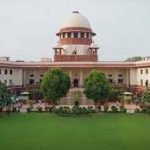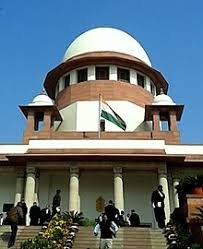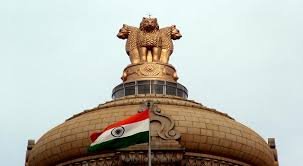The subject of the dispute is the Delhi Ridge, a natural rock formation and part of the ancient Aravalli hill range. It encompasses approximately 7,777 hectares of forest land and plays a vital ecological role, often referred to as the “lungs of Delhi”. Its origins date back to the Proterozoic era, making it one of the oldest geological formations on the planet.
The case revolves around unauthorised tree felling and construction of an approach road to a farmhouse within the Delhi Ridge area, specifically the Maidangarhi and Satbari areas.
The proceedings were initiated through a Public Interest Litigation (PIL). Key respondents include various government authorities such as the Delhi Development Authority (DDA), Central Public Works Department (CPWD), Department of Forests and Wildlife, and officials from the Ministry of Environment, Forest, and Climate Change (MoEF&CC).
Law Involved
The judgment draws upon several key pieces of legislation and legal principles to address the environmental violations:
Forest (Conservation) Act, 1980 (FCA): This Act is central to the case, as permissions for tree felling and diversion of forest land for non-forest purposes are governed by it. The Court highlighted that no prior permission from the Central Government or the Court had been obtained for the felling.
Wildlife (Protection) Act, 1972: Relevant in areas falling within Eco-Sensitive Zones, requiring approvals from the National Board for Wildlife (NBWL).
Environment (Protection) Act, 1986: This Act provides a broad framework for environmental protection and is referenced in the Court’s assessment of environmental degradation.
The Delhi Master Plan: The Master Plan for Delhi Perspective 2021 specifically stated that no further encroachment or infringement upon the Delhi Ridge would be permitted, and the Ridge should be preserved and maintained in its pristine condition.
Constitutional Mandate & Public Trust Doctrine: While not explicitly cited as “constitutional law,” the Court’s repeated emphasis on the Ridge’s protection as being essential for the ecological balance of the city reflects a commitment to environmental rights, which are often considered part of fundamental rights in Indian constitutional jurisprudence. The Court acts as a custodian of natural resources for public benefit, aligning with the public trust doctrine.
Judicial Precedent & Contempt of Court: The Court noted that its own orders are binding and hold equivalent force to legislative enactments. The continuous violation of these orders led to findings of contempt and a need for accountability.
Reasoning :
The Court’s reasoning was multi-faceted, focusing on the critical ecological role of the Delhi Ridge, the flagrant disregard of its previous orders, and the dereliction of duty by various authorities:
Ecological Imperative: The Court consistently reiterated that the Delhi Ridge is indispensable for maintaining the ecological balance of the city, often referring to it as the “lungs of Delhi”. This ecological significance formed the fundamental premise for its strong stance.
Unauthorized Actions & Lack of Permissions: Investigations confirmed that substantial tree felling had occurred without obtaining the requisite prior permissions from the Court or under the Forest (Conservation) Act, 1980. The construction of an approach road further compounded these violations.
Official Lapses & Misleading Information: The Court found that various authorities were aware of the illegal activities but failed to take adequate action. Crucially, officials also provided misleading information to the Court, creating a false impression of compliance and adherence to regulations. This amounted to dereliction of duty and obstructed the administration of justice.
Prior Directives Ignored: The Court highlighted its long history of issuing directions to protect the Ridge, including the establishment of the Ridge Management Board (RMB). The current violations demonstrated a failure to comply with these standing orders, which the Court viewed as a serious matter.
Necessity of Strict Measures: Given the scale and brazenness of the violations, and the repeated non-compliance, the Court deemed it imperative to adopt a firm and uncompromising approach. It emphasized that it must be guided by the overarching objective of upholding the Rule of Law and restoring public confidence, rather than being lenient.
The Court issued stringent directives and initiated strong actions to enforce environmental protection and accountability:
Prohibition of Further Felling: The Court explicitly ordered an immediate halt to any further tree felling for the construction of the approach road to the farmhouse.
Removal of Encroachments: All encroachments from the Ridge area were to be removed, ensuring the preservation of its pristine condition.
Ecological Restoration: Directives were issued for compensatory afforestation and comprehensive ecological restoration measures, including exposing bare soil by removing tar and rubble from the road and undertaking appropriate afforestation.
Accountability of Officials: The Court directed that appropriate action be taken against officials responsible for the violations and for misleading the Court. This included directing the Ridge Management Board (RMB) to address the appointments of certain officers whose conduct was questioned.
Contempt Proceedings: Contempt of court proceedings were initiated against the respondents for their blatant disregard and violation of previous court orders.
Continued Monitoring: The Court maintained its continuous oversight of the situation, requiring detailed compliance reports and directing concerned authorities to submit supplementary affidavits regarding their actions to ensure strict adherence to its orders. This approach highlighted the Court’s commitment to long-term protection of the Delhi Ridge.
Bindu Kapurea V. Subhashish Panda And Others
Supreme Court: 2025 INSC 784: (DoJ 28-05-2025)








